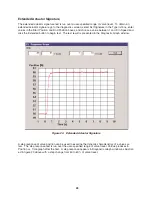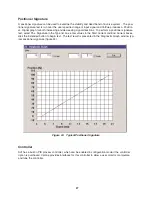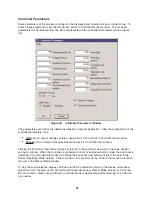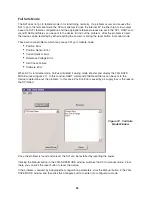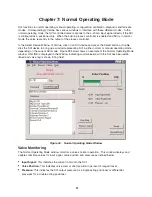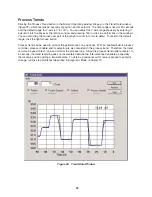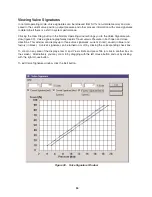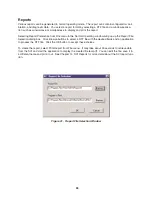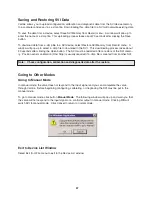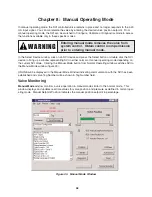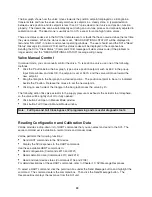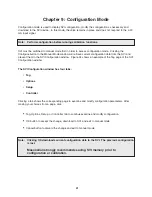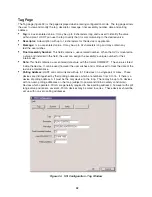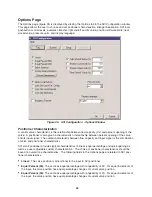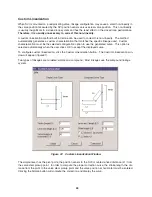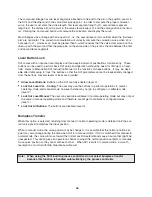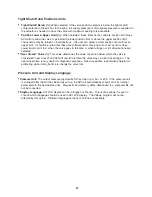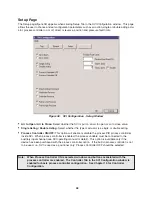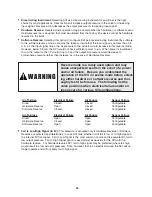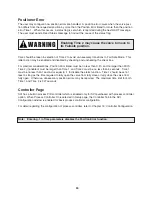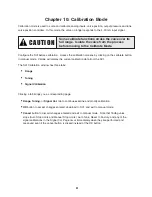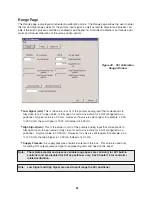
The bar graph shows how the valve moves towards the position setpoint displayed as a triangle in a
transient state and how the valve closely matches its setpoint in a steady state. A typical deviation
between valve position and its setpoint is less than 0.2% plus dead zone if valve and position function
properly. The dead zone can be automatically set during an auto-tune process and manually adjusted in
calibration mode. The dead zone is usually set to 0.0% except for some high friction valves.
There are status codes set in the SVI that indicate events or faults that have occurred since the last time
they were cleared. When the status codes is set, "READ ADDITIONAL STATUS" will be displayed in
red under "ON LINE" in normal and manual operating windows. The user should send the SVI a "Read
Status" message (Command #136) and the status codes will be displayed in the response box.
Sending the SVI a "Clear Status" (Command #138) message will clear status code (if the problem no
longer exists) and the "READ ADDITIONAL STATUS" message will go away.
Valve Manual Control
In manual mode, you can manually control the valve. To reposition a valve, use one of the following
methods:
•
Click the P button below the bar graph, type a valve position setpoint such as 55.0 in the popup
Input Data window and click OK, the setpoint is set at 55.0% and the valve will move toward the
new setpoint.
•
Drag the triangle in the bar graph to a desired position. The position setpoint to be set is indicated
beside the P button. Release the mouse to set the new setpoint.
•
Clicking on each side of the triangle in the bar graph moves the valve by 5%.
The following action fills valve actuator to the supply pressure or exhausts the actuator to atmosphere,
so the valve will be tightly shut off or fully opened:
•
Click button Full Open in Manual Mode window
•
Click button Full Closed in Manual Mode window.
Reading Configuration and Calibration Data
ValVue provides a drop-down list of HART commands that you can select and send to the SVI. The
same command set is available in normal mode and manual mode.
ValVue performs the following functions:
•
Send HART commands to the SVI device
•
Display the SVI responses to the HART commands.
Use these available HART commands to:
•
Read configuration (Commands #210 and #221)
•
Read calibration data (Commands #213 and #214)
•
Read and clear device status (Commands #136 and #138).
For detail descriptions of these HART commands, refer to Chapter 13: SVI Message Responses.
To select a HART command, click the pull-down box under the Send Message button and highlight the
command. The command enters the command box. Then click the Send Message button. The
Response Box displays the response from the SVI unit.
39
Note:
Full Open and Full Close bypass SVI programming and are useful diagnostic tools.


